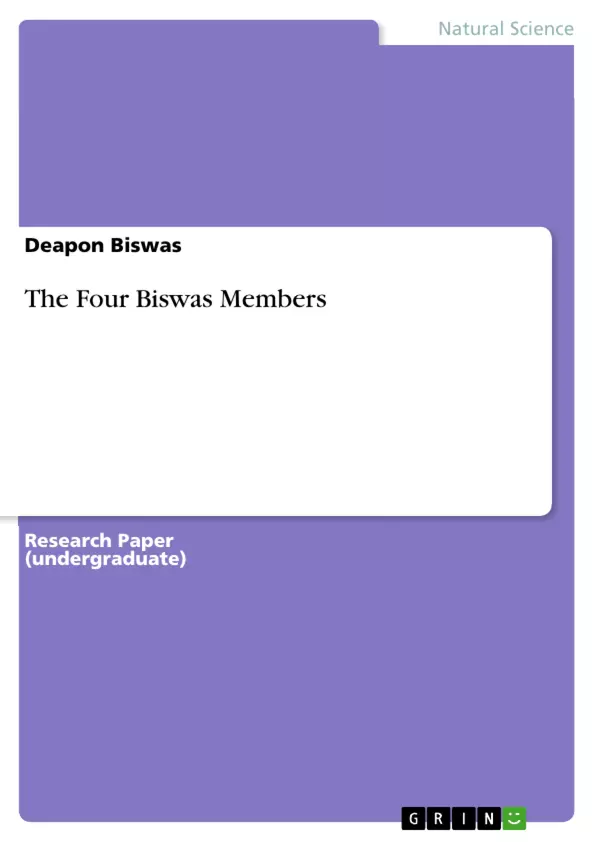So far combinations and permutations are discussed with different theorems in algebra. In this paper I apply assembly analysis to get the theorems easy and memorable. After assembly analysis applied there becomes a lot of new theorems and all the theorems get a new face by summation methods. Formations mean the selections of a random experiment where order is not taken into account and repartitions are allowed. Homogenations mean the selections of a random experiment where order is taken into account and repartitions are allowed.
Inhaltsverzeichnis (Table of Contents)
- Introduction
- Findings
- Combination space
- Combination event
- General combination theorem
- Combination distribution
- Permutation space
- Permutation event
- General permutation theorem
- Permutation distribution
- Formation space
- Formation event
- General formation theorem
- Formation distribution
- Homogenation space
- Homogenation event
- multinomial expression
- General homogenation theorem
- Homogenation distribution
- Conclusions
Zielsetzung und Themenschwerpunkte (Objectives and Key Themes)
This paper explores the application of assembly analysis to simplify and expand the study of combinations and permutations in algebra. It introduces novel theorems and provides a new perspective on existing ones using summation methods. The paper further defines and analyzes concepts such as formations and homogenations, which differ from traditional combinations and permutations in terms of component selection and ordering.
- Application of assembly analysis to simplify and expand combinatorial theorems
- Introduction of new theorems through summation methods
- Exploration of formations and homogenations, their differences from combinations and permutations
- Development of a comprehensive framework for understanding combinatorial concepts
- Analysis of combinatorial spaces, events, and distributions
Zusammenfassung der Kapitel (Chapter Summaries)
- Introduction: This chapter defines formations and homogenations, highlighting their differences from combinations and permutations. It also introduces the concepts of components and places within formations.
- Findings: This chapter delves into the details of combination and permutation spaces, events, and distributions. It explores various theorems related to combinations and permutations, including general combination and permutation theorems.
- Combination space: This section introduces the concept of combination space, which represents the set of all possible combinations from a given set of components. It further presents a theorem for calculating the number of combinations of N different components taken V at a time.
- Combination event: This section discusses the concept of combination event, which is a specific subset of the combination space. It further presents a theorem for calculating the number of combinations with identified components.
- General combination theorem: This section presents the general combination theorem, which calculates the number of combinations where Y particular components from a limited set are selected.
- Combination distribution: This section explores the distribution of combinations and its application to various scenarios.
- Permutation space: This section introduces the concept of permutation space, which represents the set of all possible permutations from a given set of components. It also presents a theorem for calculating the number of permutations of N different components taken V at a time.
- Permutation event: This section discusses the concept of permutation event, which is a specific subset of the permutation space. It further presents a theorem for calculating the number of permutations with identified components.
- General permutation theorem: This section presents the general permutation theorem, which calculates the number of permutations where Y particular components from a limited set are selected.
- Permutation distribution: This section explores the distribution of permutations and its application to various scenarios.
- Formation space: This section introduces the concept of formation space, which represents the set of all possible formations from a given set of components. It further presents a theorem for calculating the number of formations of M different components taken V at a time.
- Formation event: This section discusses the concept of formation event, which is a specific subset of the formation space. It further presents a theorem for calculating the number of formations with identified components.
- General formation theorem: This section presents the general formation theorem, which calculates the number of formations where Y particular components from a limited set are selected.
- Formation distribution: This section explores the distribution of formations and its application to various scenarios.
- Homogenation space: This section introduces the concept of homogenation space, which represents the set of all possible homogenations from a given set of components. It further presents a theorem for calculating the number of homogenations of M different components taken V at a time.
- Homogenation event: This section discusses the concept of homogenation event, which is a specific subset of the homogenation space. It further presents a theorem for calculating the number of homogenations with identified components.
- multinomial expression: This section introduces the multinomial expression and its connection to homogenations.
- General homogenation theorem: This section presents the general homogenation theorem, which calculates the number of homogenations where Y particular components from a limited set are selected.
- Homogenation distribution: This section explores the distribution of homogenations and its application to various scenarios.
Schlüsselwörter (Keywords)
The core concepts of this paper revolve around combinatorics, particularly combinations and permutations. It extends these concepts by introducing formations and homogenations, which differ from traditional combinations and permutations. The paper emphasizes the application of assembly analysis, summation methods, and distribution analysis to understand and simplify combinatorial concepts.
- Arbeit zitieren
- Deapon Biswas (Autor:in), 2018, The Four Biswas Members, München, GRIN Verlag, https://www.grin.com/document/450780



